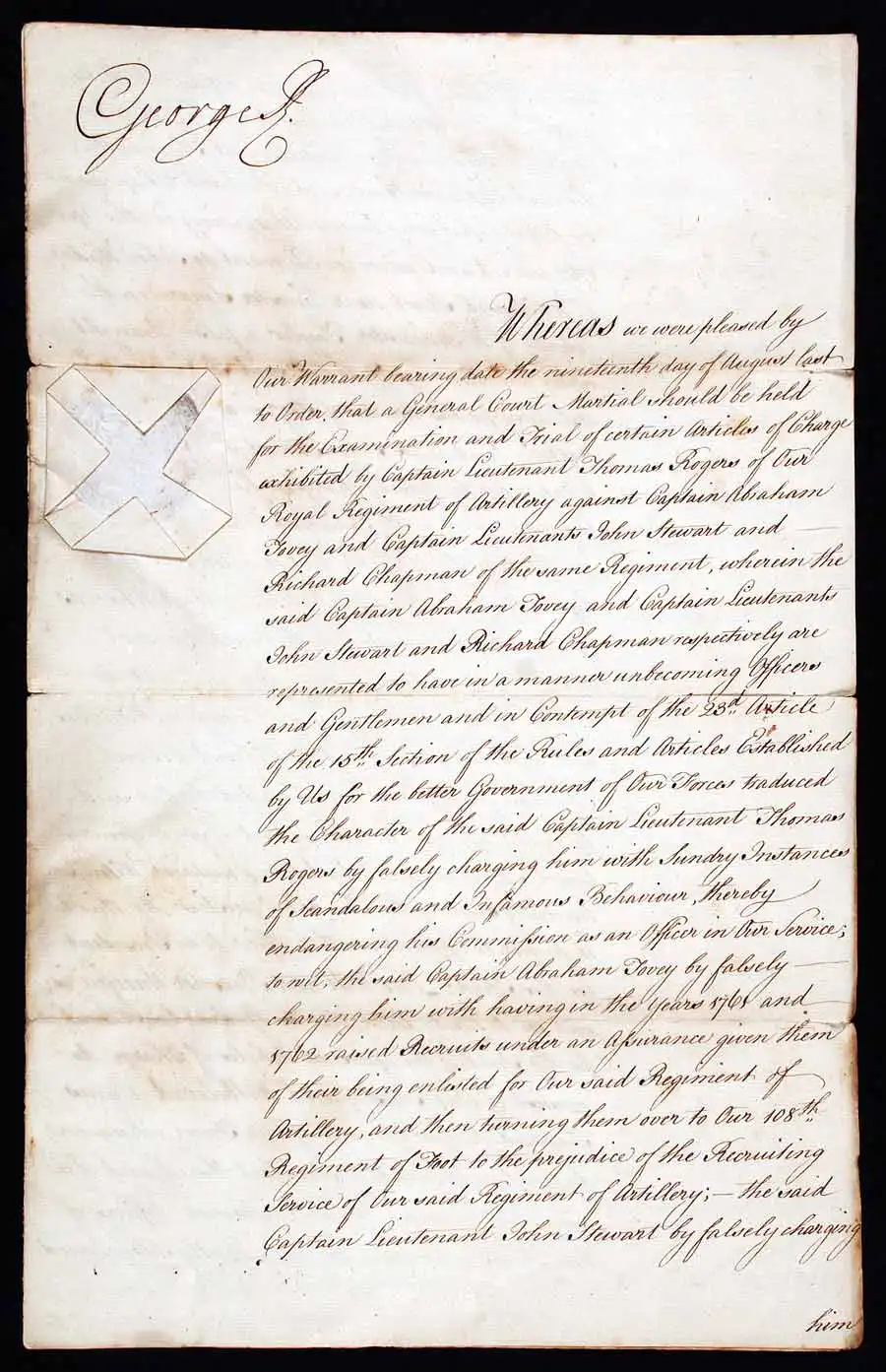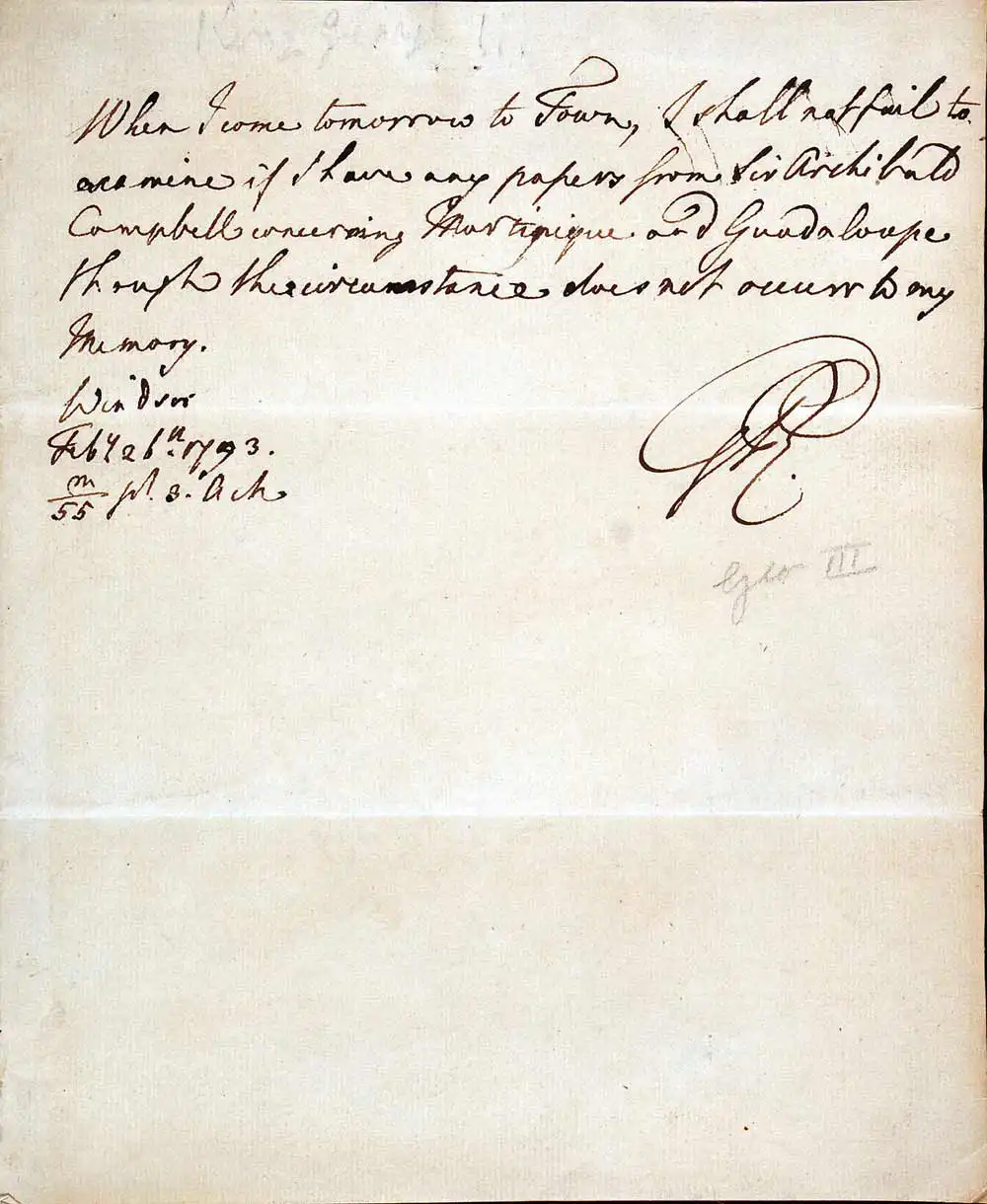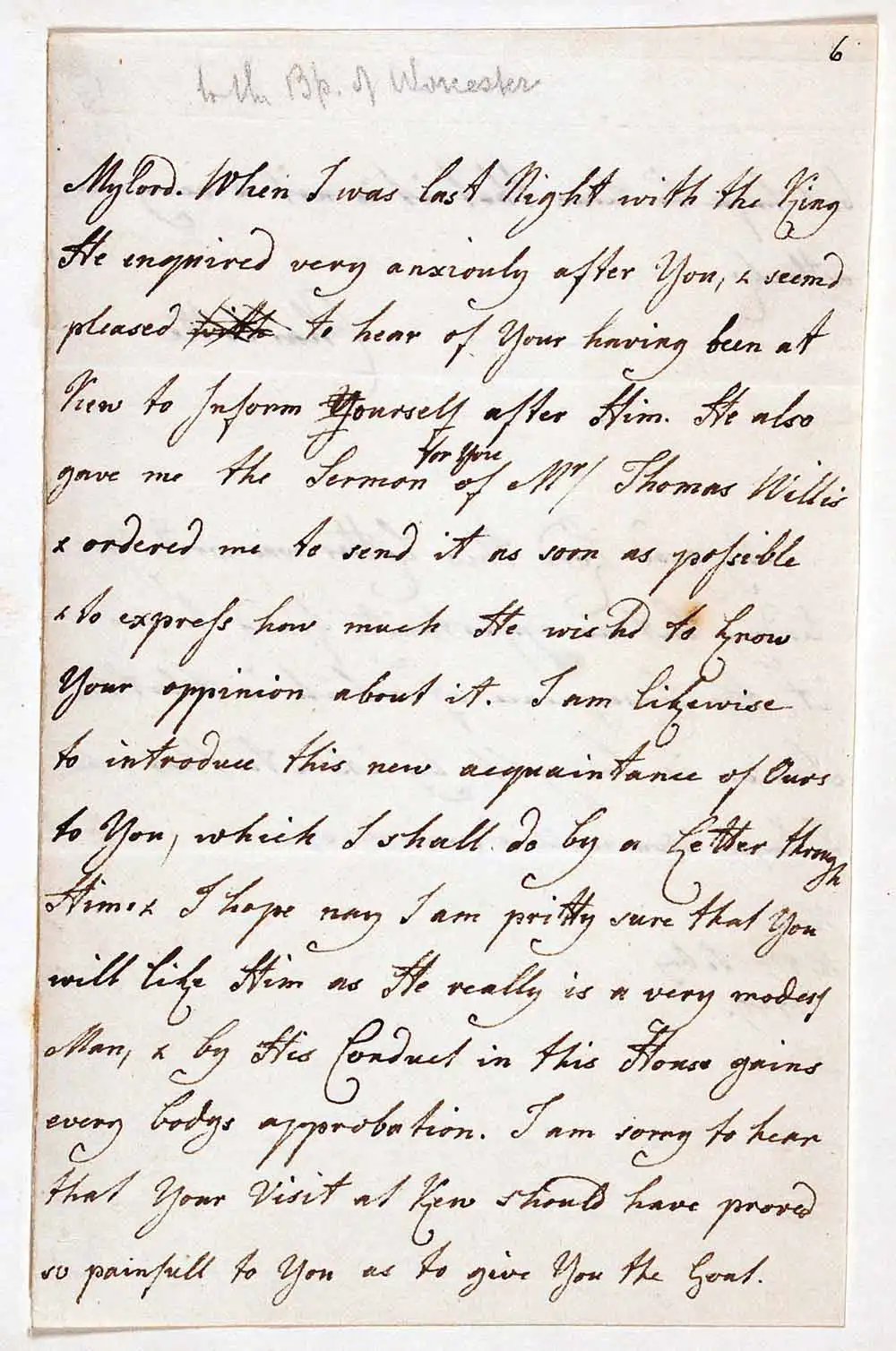Case 4
- George III & Charlotte

Royal warrant for holding a general court martial. Signed by George III (1738–1820) and issued by William Petty, 2nd Earl of Shelburne (1737–1805), to Thomas Morgan (1702–1769), Judge Advocate General, 16 December 1767.
The son of George II, Frederick, Prince of Wales, predeceased his father by nine years. Upon the death of George II, the kingship passed to his grandson, who was crowned George III in September 1761. George's life and reign were longer than those of any previous British monarch. His rule was marked by a series of military conflicts, including the loss of the American colonies in the American War of Independence, and the defeat of Napoleon at the Battle of Waterloo in 1815. In the later part of his life, George III suffered from recurrent, and eventually permanent, mental illness, possibly caused by the blood disease porphyria. The King suffered a final relapse in 1810, which resulted in the establishment of a regency during which his eldest son, George, Prince of Wales, ruled as Prince Regent.
This warrant, signed by the King, is for the holding of a general court martial to be tried against three officers serving in the Royal Regiment of Artillery. The men stood accused of acting in a manner ‘unbecoming [of] Officers and Gentlemen’ by falsely charging one Captain Lieutenant Thomas Rogers with ‘Sundry Instances of Scandalous and Infamous Behaviour’ relating to the raising of recruits. It is interesting to note that the name of one of the accused, Captain Abraham Tovey, is found in the list of subscribers to A Treatise on Court Martial, published in New York in 1769.

Royal warrant for holding a general court martial. Signed by George III (1738–1820) and issued by William Petty, 2nd Earl of Shelburne (1737–1805), to Thomas Morgan (1702–1769), Judge Advocate General, 16 December 1767.
Open image in new window

Letter initialled. George III to ‘Sir’, Windsor, London, 26 February 1793.
Though the Reed Autograph Letters & Manuscripts Collection includes a number of documents signed by various monarchs, few are fully in a royal hand. One exception is this short note written by George III. In the letter, he responds to an enquiry made by an unknown person who sought information on the papers of Sir Alexander Campbell (1739–1791), an army officer and colonial governor in the Caribbean.
The addressee was concerned with receiving specific information that related to an event on the islands of Martinique and Guadalupe, but George III replied that ‘the circumstance does not occur to my Memory’. The king was fifty-five when he penned this reply, and was surely preoccupied with the reality that Napoleonic France had just declared war on Great Britain earlier that month.

Letter signed. Charlotte, Queen Consort of George III (1744–1818), to Richard Hurd, Bishop of Worcester (1720–1808), Kew, 7 February 1789
Charlotte and George III were married on 8 September 1761. As his wife, she also became the electress consort of Hanover until the promotion of her husband to King of Hanover on 12 October 1814, which also made her Queen consort of Hanover. Her life was by most accounts a tranquil one, with the exceptions being the disruptions caused by George’s attacks of illness. Charlotte exercised little political power and was a great patron of the arts. She was known to Johann Christian Bach and Wolfgang Amadeus Mozart, among other composers, and an amateur botanist who helped expand Kew Gardens.
This short letter by Charlotte to the Bishop of Worcester was written at Kew, where George III was undergoing treatment for his illness. She wrote that the King, ‘enquired very anxiously after You, & seemed pleased to hear of Your having been at Kew to Inform Yourself after Him’. The visit might not have all that beneficial for the Bishop, as Charlotte closed the letter by writing, ‘I am so sorry to hear that Your Visit … proved so painfull … as to give You the Gout’. The letter also introduced a ‘very modest Man’ named Thomas Willis, a member of the family of specialist ‘mad doctors’ (i.e. psychiatrists) who were brought in to care for the King during his illness. Thomas Willis, a reverend rather than a doctor, became Charlotte’s confidant.

Letter signed. Charlotte, Queen Consort of George III (1744–1818), to Richard Hurd, Bishop of Worcester (1720–1808), Kew, 7 February 1789
Open image in new window


